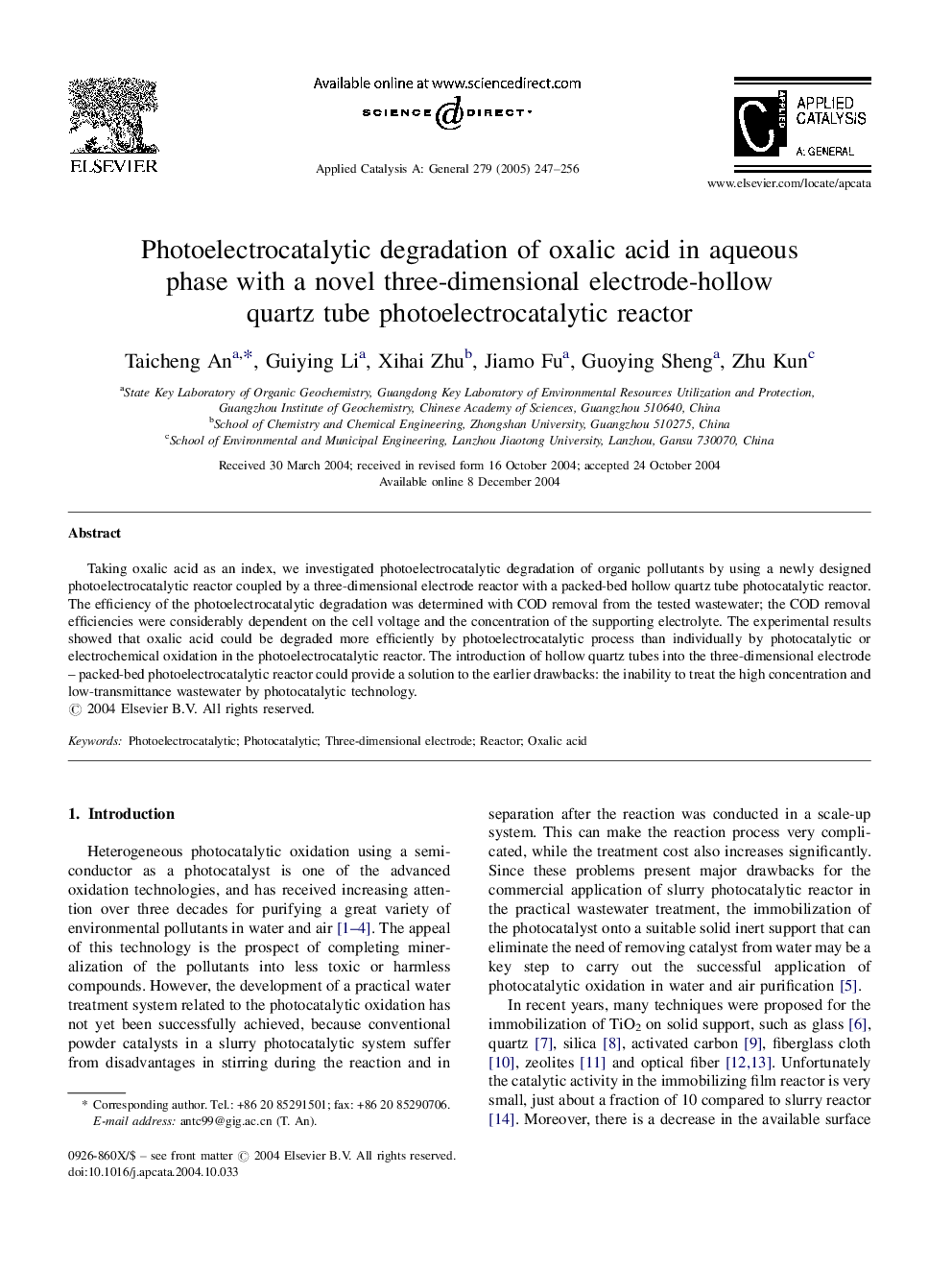| Article ID | Journal | Published Year | Pages | File Type |
|---|---|---|---|---|
| 9608157 | Applied Catalysis A: General | 2005 | 10 Pages |
Abstract
Taking oxalic acid as an index, we investigated photoelectrocatalytic degradation of organic pollutants by using a newly designed photoelectrocatalytic reactor coupled by a three-dimensional electrode reactor with a packed-bed hollow quartz tube photocatalytic reactor. The efficiency of the photoelectrocatalytic degradation was determined with COD removal from the tested wastewater; the COD removal efficiencies were considerably dependent on the cell voltage and the concentration of the supporting electrolyte. The experimental results showed that oxalic acid could be degraded more efficiently by photoelectrocatalytic process than individually by photocatalytic or electrochemical oxidation in the photoelectrocatalytic reactor. The introduction of hollow quartz tubes into the three-dimensional electrode - packed-bed photoelectrocatalytic reactor could provide a solution to the earlier drawbacks: the inability to treat the high concentration and low-transmittance wastewater by photocatalytic technology.
Related Topics
Physical Sciences and Engineering
Chemical Engineering
Catalysis
Authors
Taicheng An, Guiying Li, Xihai Zhu, Jiamo Fu, Guoying Sheng, Zhu Kun,
